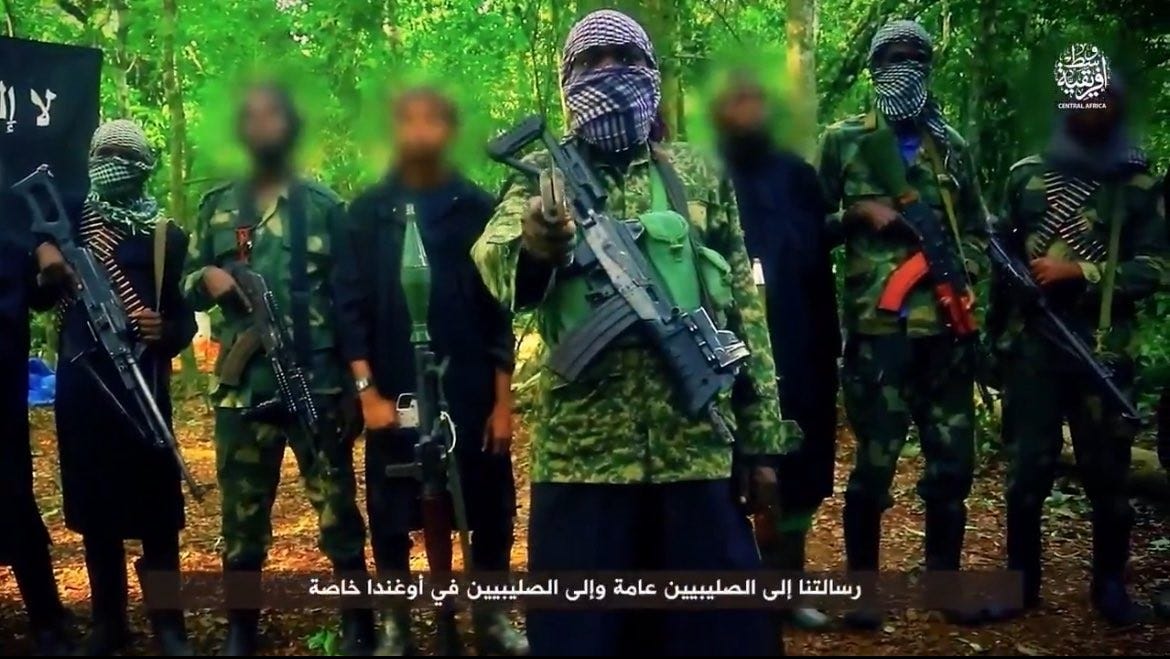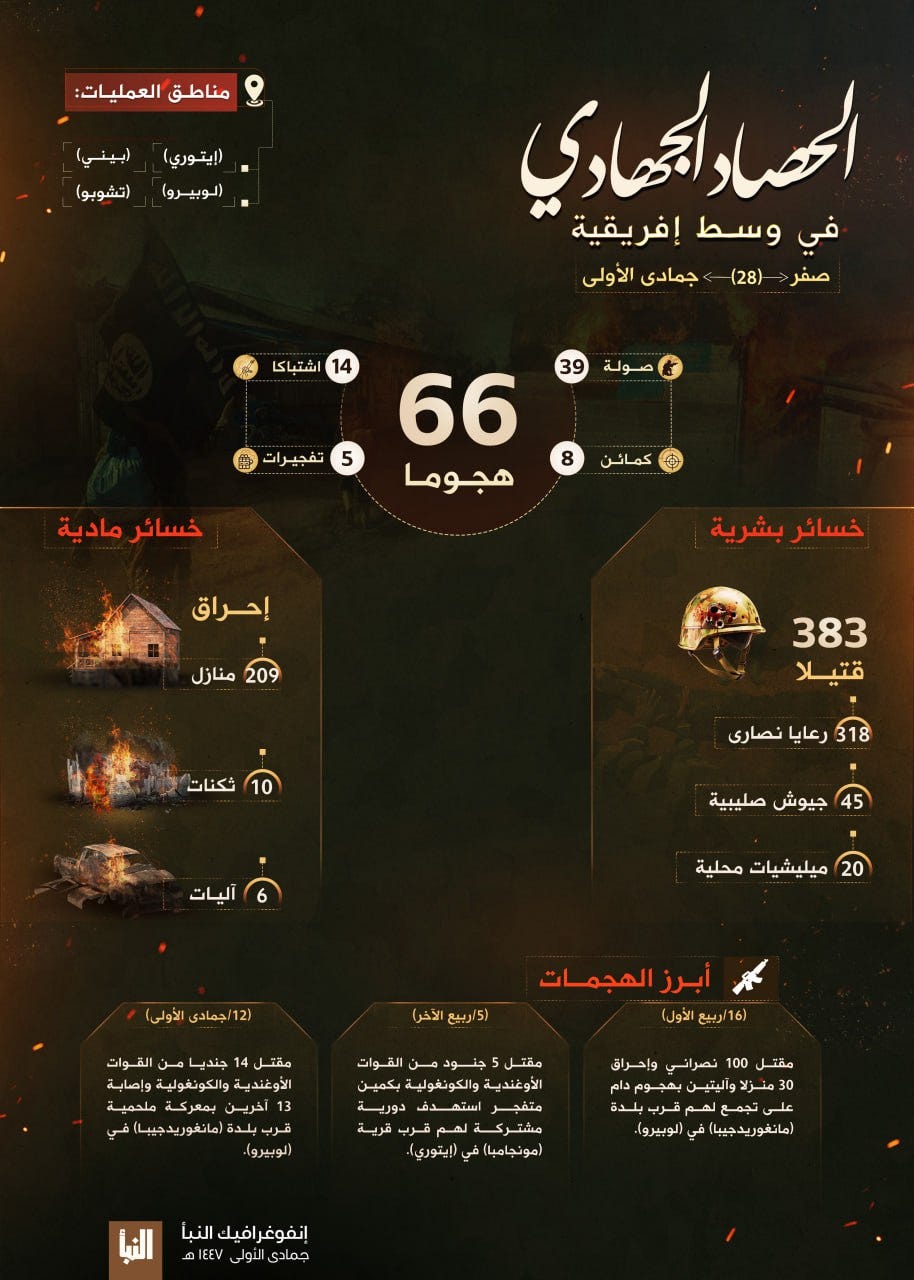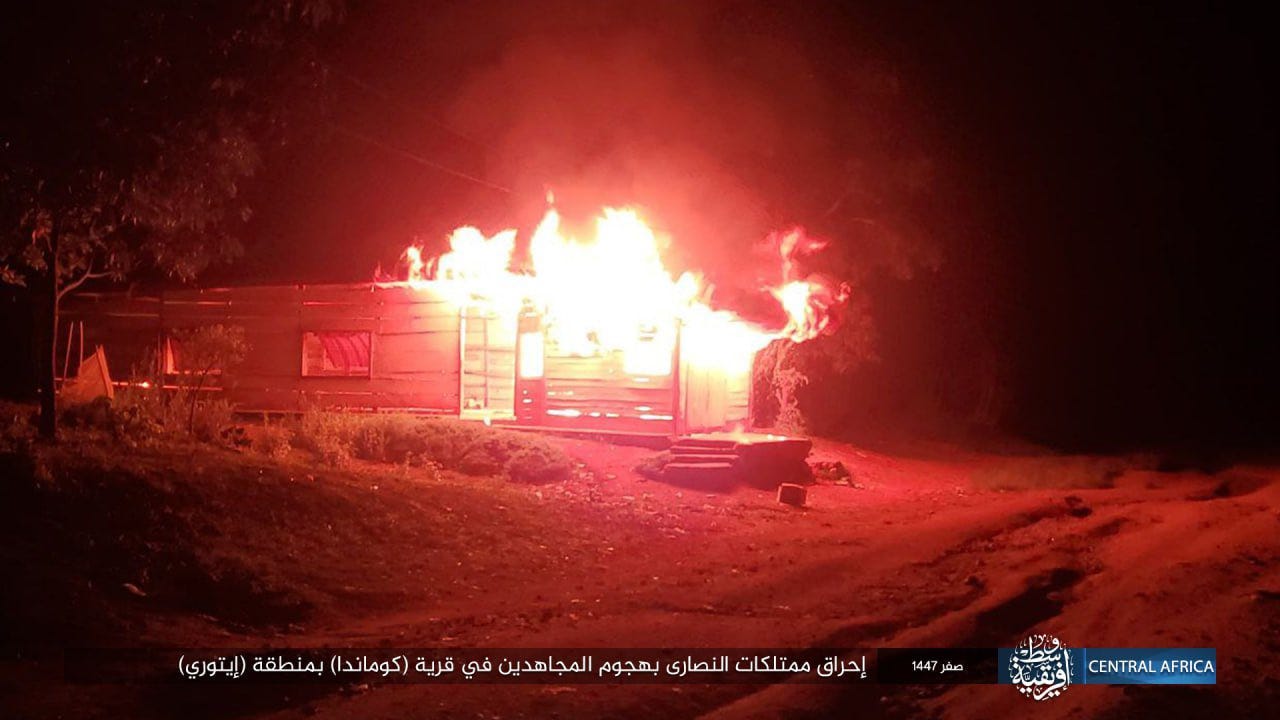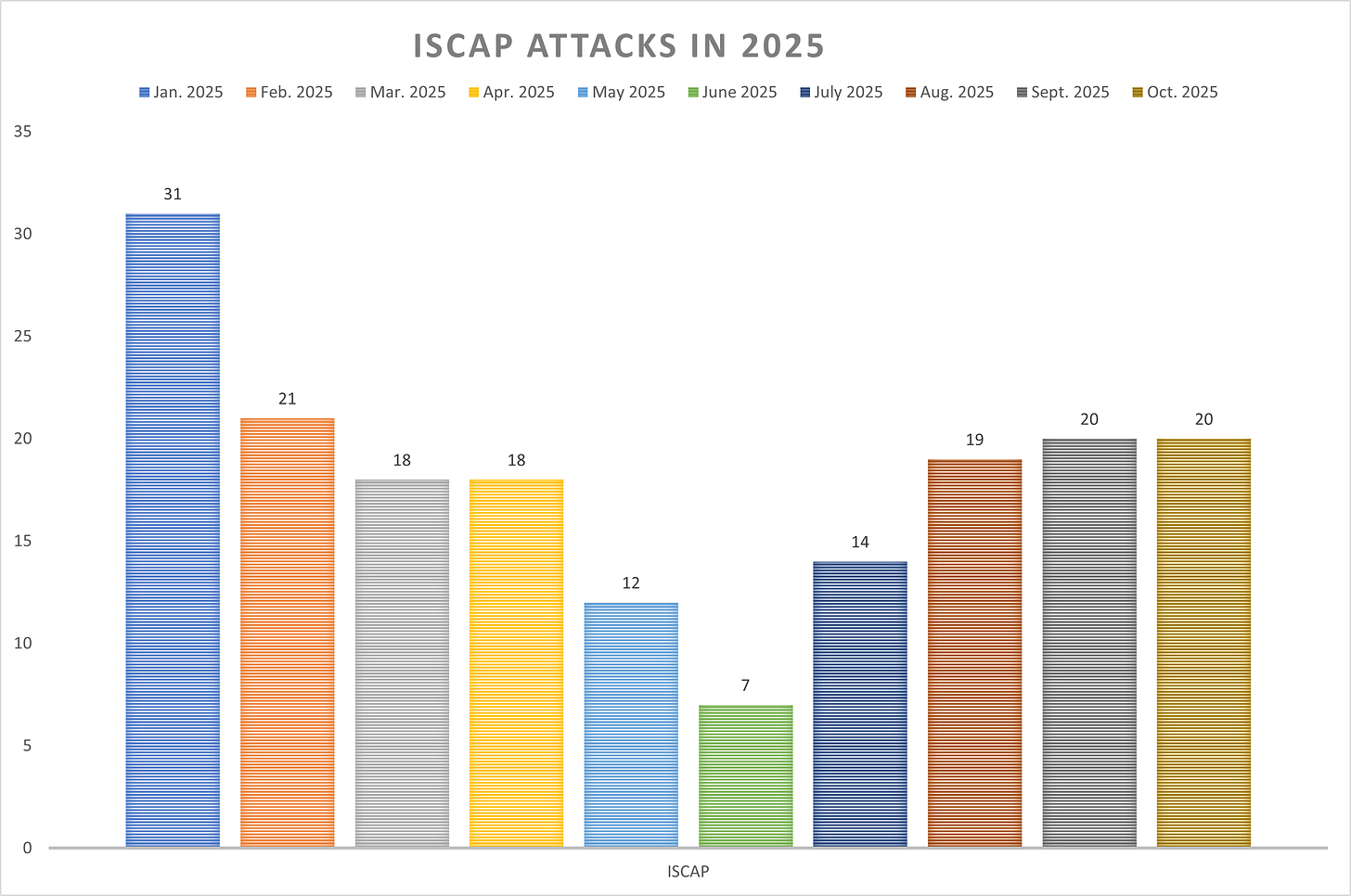The aesthetics of violence: ISCAP infographics and three months of attacks in DR Congo.
Analysis of the ISCAP infographic in al-Naba 522
Daniele Garofalo Monitoring is registered with the Italian National ISSN Centre and the Centre for the Registration of Serial Publications (CIEPS) in Paris.ISSN (International Standard Serial Number): 3103-3520ORCID Code: 0009-0006-5289-2874Objectives of the analysis: Objective of the analysis: analysis of the latest infographic published in al-Naba 522 dedicated to ISCAP DRC’s activities over the last three months.
Sources/Methodology: Direct analysis of propaganda and military information contained in the current issue (photos, statements, claims). The study utilises OSINT, SOCMINT and Digital HUMINT sources.
Limitations: Incomplete information (sometimes IS reports and claims in al-Naba tend to exaggerate numbers or often include attacks and photos not officially claimed in the past), bias of sources, possibility of propaganda and disinformation. Over the years, it has been noted that the attack data provided by the Islamic State in its propaganda is real and verifiable in the field; usually, the exaggeration is in the number of damages/deaths caused (in the case of unverified attacks, the author will indicate this directly in the analysis, as was the case for some attacks carried out in Uganda in early 2025).
Structure of the analysis: Overview of ISCAP in 2025 and brief analysis of the infographic published in the weekly magazine al-Naba 522, dedicated to attacks by the Islamic State in the Central African Province (ISCAP).
Overview
In the final months of 2025, the Islamic State Central Africa Province (ISCAP) intensified its campaign of violence in eastern Democratic Republic of Congo, particularly in the provinces of Ituri and North Kivu. The group implemented a significant strategic shift: from rapid raids to a more stable mode of territorial control, using extortion, social domination, and agricultural and religious exploitation to consolidate its presence1.
This restructuring is taking place against a backdrop of weakness in the Congolese state and a power vacuum generated in part by the recent advance of the M23 rebel group. ISCAP’s attacks appear to be partly a reaction to joint military pressure from Uganda and the DRC — in particular the “Operation Shujaa” offensive on the Ituri base camp known as “Madina”2.
In terms of objectives, jihadist propaganda has taken on a strong sectarian component: ISCAP has clearly intensified its campaign against Christian communities, with systematic killings3.
The group also does not hesitate to target civilians, as evidenced by recent massacres (e.g. in Komanda, Ituri, and Ntoyo, North Kivu), also employing urban guerrilla tactics and infiltration along strategic routes4.
ISCAP represents a growing jihadist threat that is increasingly integrated into the global network of the Islamic State. Its ability to adapt, in operational, ideological and media terms, makes it a strategic player that exploits regional chaos to establish a lasting foothold5.
At the same time, its recruitment, abuse of minors and religious propaganda (described by some as “coercive dawa”) have also been the subject of attention from international justice centres6. This picture shows how, rather than being a marginal phenomenon, ISCAP is emerging as a sophisticated jihadist group that combines local logic with transnational objectives.
ISCAP infographic
In the latest issue of al-Naba, number 522, published last Thursday, on the last page, Islamic State media included a detailed infographic entitled “Jihadist Harvest in Central Africa”, dedicated to the activities of the Islamic State Central Africa Province (ISCAP).
The period under consideration is approximately three months, from 28 Safar to 28 Jumada al-Awwal 1447, corresponding to 22 August 2025 to 19 November 2025.
During this period, ISCAP claims to have carried out 66 attacks, broken down as follows:
8 ambushes,
39 direct attacks,
14 armed clashes,
5 explosions with IEDs.
The attacks were carried out in the provinces of:
Ituri,
North Kivu.
According to ISCAP, resulted in the deaths of 383 people, including:
318 Christian civilians,
45 soldiers from the Congolese and Ugandan armies,
10 soldiers from local pro-government militias.
ISCAP also claims to have destroyed or burned:
209 houses and churches in Christian villages,
10 military barracks,
destroyed 6 armoured vehicles.
On 21 August 2025, in issue 509 of al-Naba, the Islamic State media had already published an infographic dedicated to ISCAP, in that case based on 57 days (from 26 June to 21 August) in which ISCAP claimed responsibility for 27 attacks (for more details, read here).
In conclusion, below is a graph showing the data on the trend of ISCAP attacks in 2025:
© Daniele Garofalo Monitoring - All rights reserved.
Daniele Garofalo is a researcher and analyst on Jihadist Terrorism, Islamist Insurgents and Armed Groups. He is an expert in Monitoring Jihadist Media Channels, Islamist rebels, and Armed Groups.
African Security Analysis, “Strategic Shift of ADF/ISCAP – Focus on Territorial Control in Ituri and North Kivu,” April 18, 2025.
African Security Analysis, “Why the FARDC–UPDF Coalition Struggles Against ADF/ISCAP,” report, 25 giugno 2025
The Soufan Center, “Islamic State Central Africa Province Intensifies Sectarian Targeting Campaign,” Intelbrief, July 30, 2025.
Barnabas Aid, “Forty-Seven More D. R. Congo Christians Killed by Islamists”, March 2025.
Barnabas Aid, “At least 36 more D. R. Congo Christians killed by Islamic State”, August 2025.
https://www.barnabasaid.org/gb/news/at-least-36-more-d-r-congo-christians-killed-by-islamic-state/
African Security Analysis, “How ADF/ISCAP Overran Komanda in July 2025”, July 31 2025.
Hoover Institution, “Rumble In The Jungle: ISCAP’s Rising Threat”, analysis, June 2025.
Long War Journal, Analysis: Islamic State attempts suicide bombing in Uganda, June 4, 2025.
The Center For Justice & Accountability, “Abduction, Exploitation, and Trickery: Examining the Islamic State’s Recruitment and Exploitation of Minors in Central Africa”, May 2025.
Daniele Garofalo Monitoring is registered with the Italian National ISSN Centre and the International Centre for the Registration of Serial Publications (CIEPS) in Paris.
ISSN (International Standard Serial Number): 3103-3520
ORCID Code: 0009-0006-5289-2874
Support my research, analysis and monitoring with a donation here, PayPal.Me/DanieleGarofalo88






